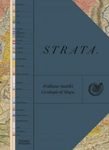By
Leon (NHBS Catalogue Editor)
12 Nov 2019
Written for Hardback

Planet Earth is home to a staggering number of species. A 2011 article in
PloS Biology gave an educated guess of 8.7 million known species of eukaryotes (this is the domain of life to which all multicellular life forms – plants, insects, fungi, mammals etc. – belong, but excludes single-celled life forms such as bacteria). More staggering still is that this probably is only 10-12% of all existing species, with an estimated 86% of terrestrial species and 91% of marine species as of yet undiscovered.
So, scientists describe new species of plants and animals all the time. This much you probably know. What might come as a surprise, however, is that many of these discoveries are not made in the field, but in the massive natural history collections housed in museums around the world. In
The Lost Species, Christopher Kemp takes the reader on a tour through the collections to reveal the stories behind some of these discoveries.
The book is divided into two parts, one with ten chapters on vertebrates, the other with twelve chapters on invertebrates (sorry botanists and palaeontologists, you were given only one chapter each). Kemp goes well beyond just giving us a dry description of the details of each species. Each newly described species has a story to tell, multiple stories often. Stories of their initial collection – sometimes by luminaries such as president Roosevelt (a tapir), Alfred Russell Wallace (a cichlid) or Charles Darwin himself (a beetle) – that are livened up by passages from diaries or letters. But also stories of their subsequent rediscovery and description. Stories of perseverance and hard work, of researchers spending years of their life visiting museum collections or borrowing specimens to compare all the known material and becoming self-taught experts on a species in the process. Stories of curiosity, of people hungering to better understand our world and the creatures that live in it. Above all, it seems, stories of serendipity and luck, of being in the right place at the right time, of opening up jars or drawers in the cavernous depths of off-limits storage facilities and realising:"Hey, I have never seen anything like this before". And even where Kemp describes the species, his prose is lyrical, poetic sometimes. To give you an example:
"under a microscope a cynipid wasp is beautiful: black and streamlined like a miniature fighter jet [...] compound eyes glint like chrome mesh" [p. 99]
In Kemp's hands, zoologist Eric Hoberg, who specialises in parasitic worms, becomes the keeper of a house of horrors, one of his study subjects "emerging from a dead grasshopper in a squirming coil like a magic trick no one wants to see". There are moments that Kemp had me laughing out loud when describing the sometimes bizarre and otherworldly creatures that surround us.
I think it is safe to say that if natural history museums have a dirty little secret it is that collecting specimens is much less time-consuming than describing species. As a consequence of centuries of collection efforts by naturalists and explorers, the world's natural history museums are overflowing with literally billions of specimens (which does raise some troubling questions about how money and effort is allocated...). Much of this material goes undescribed, a large chunk (Kemp quotes estimates of as much as 50%!) has been misidentified. For many groups only highly-trained specialists, taxonomists, can make the distinction between species, and recognising and describing new ones can take years of painstaking work. The situation is only made worse by the lack of curators and qualified taxonomists. And seeing that many of these species are not necessarily the sexiest (nematodes, anyone?) funding cuts are making the chronic shortage of money and manpower only worse. The amount of work that remains to be done is dizzying and sobering at the same time. We would need armies of taxonomists to get to grips with it.
The Lost Species is filled with real-life examples of the unknowns that DeNicola described in theoretical terms in
Understanding Ignorance: The Surprising Impact of What We Don't Know.
You might ask "Who cares?" Does it really matter whether we know that some bandicoot scurrying through the undergrowth of a tropical forest in Papua New Guinea is not actually one, but two species? Or that some genus of tarantula in the United States was incorrectly described by a 19th-century systematist and that several species turn out to be one and the same? This goes right to the heart of the question why we should care about biodiversity at all, something I wrote more about in my review of
Defending Biodiversity: Environmental Science and Ethics.
It is a question Kemp brings up throughout the book. Obviously, he thinks it does matter, for the simple reason that you cannot protect that which you do not know. Before we can even talk about the biology of a species or its role in an ecosystem, it needs to have a name. To understand the world around us, how it is changing, and what it was like in the past, you need to have names for the creatures that inhabited it then and now. Without these labels, without these identities, we cannot even begin to have a conversation.
Full of wonder and adventure,
The Lost Species is an amazing read that I simply could not put down. It made me search the internet for citizen science projects to see how I can help out unlocking some of this knowledge. Taxonomists and curators have a great advocate and standard-bearer in Kemp and are indebted to him for putting their work and its importance in the limelight. Simply put, this book should be in the shop of every natural history museum and is a great read next to Grande's
Curators: Behind the Scenes of Natural History Museums.


































